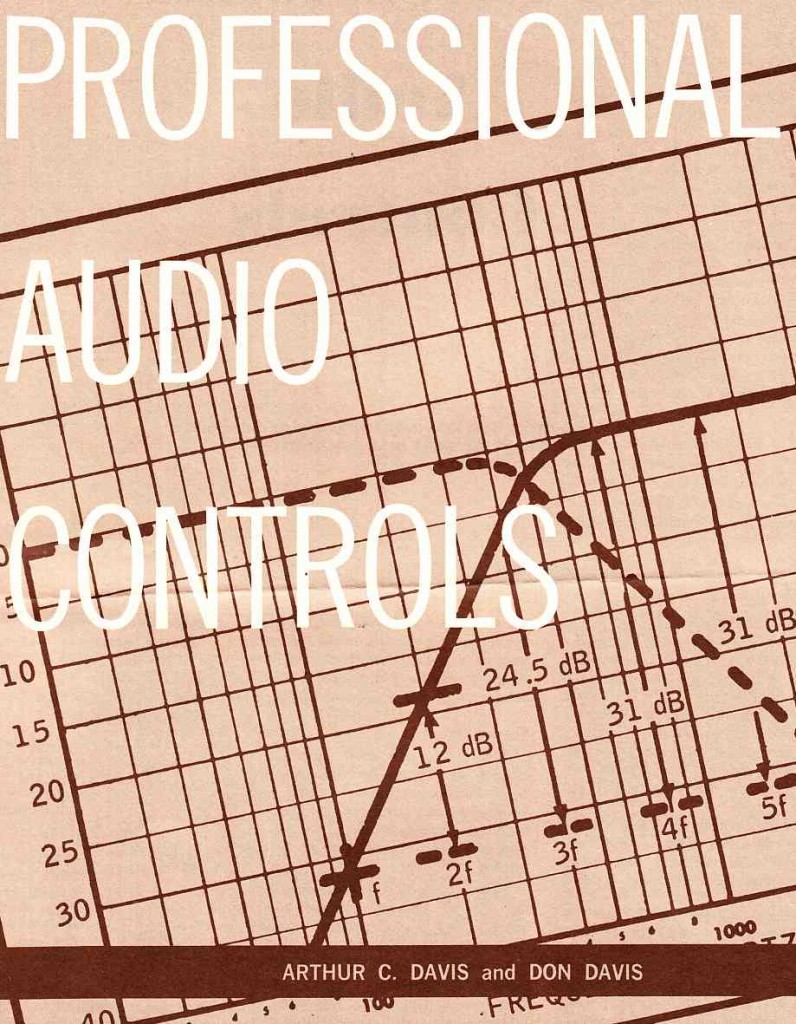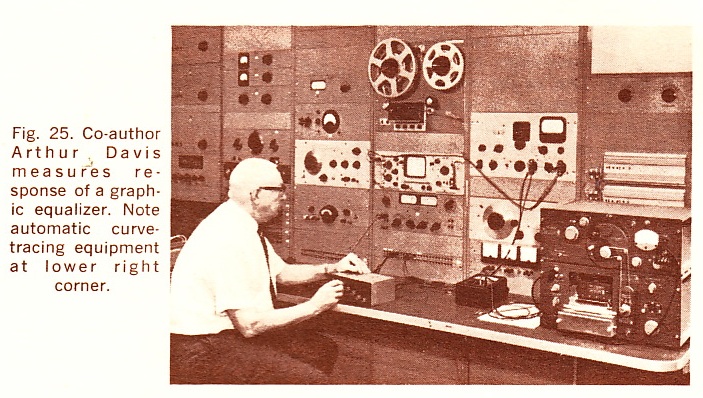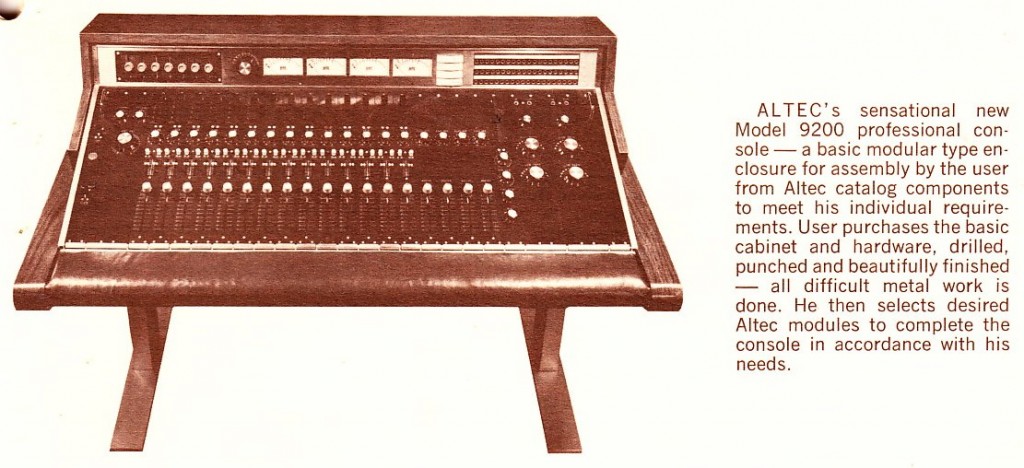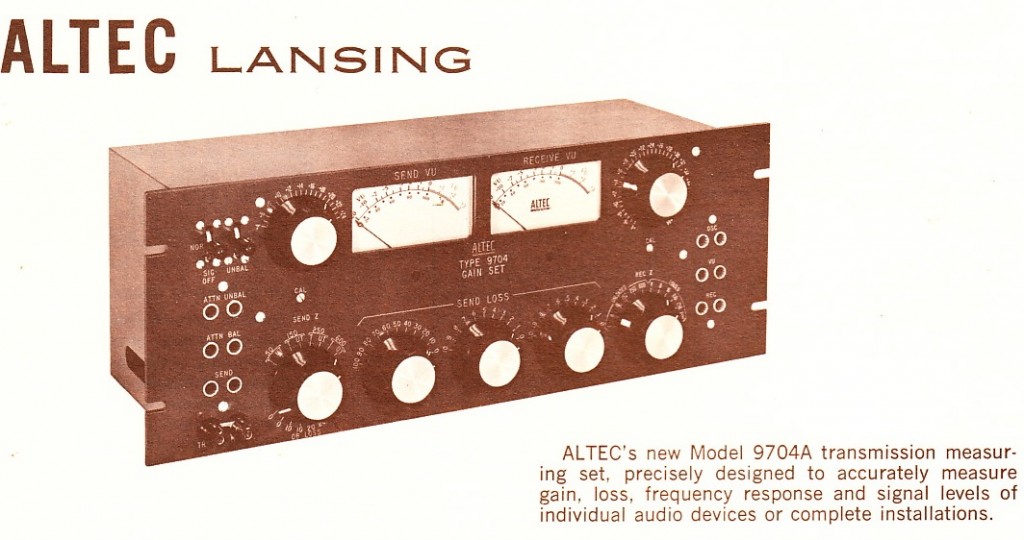 Around the time that ALTEC introduced their 947X series of solid-state plug-in amplifiers, ALTEC staff engineers Arthur Davis and Don Davis published the following paper in AUDIO magazine (see my previous post on AUDIO mag). ALTEC then reproduced and re-printed the paper as promotional material. I have scanned and uploaded the fill 12-page document.
Around the time that ALTEC introduced their 947X series of solid-state plug-in amplifiers, ALTEC staff engineers Arthur Davis and Don Davis published the following paper in AUDIO magazine (see my previous post on AUDIO mag). ALTEC then reproduced and re-printed the paper as promotional material. I have scanned and uploaded the fill 12-page document.
DOWNLOAD: Altec_Professional_Audio_Controls
 Covered in this document: the 9200 modular console, the 9704A transmission measurement set, and the various ALTEC passive equalizer units of the period: graphic, shelving, and pass filters.
Covered in this document: the 9200 modular console, the 9704A transmission measurement set, and the various ALTEC passive equalizer units of the period: graphic, shelving, and pass filters.

 Check out the publication. It is a good quick primer on early impedance-matched mixing systems. In the future, I will post more extensive documentation on these ALTEC consoles and filters.
Check out the publication. It is a good quick primer on early impedance-matched mixing systems. In the future, I will post more extensive documentation on these ALTEC consoles and filters.
3 replies on “Altec Professional Audio Controls Paper Circa 1960’s”
Altec claims the 9200A console was issued in 1967, so the paper would have to be from that time, at earliest.
Art Davis and Don Davis were not related. The design of Audio Controls was done by Art Davis and John Hall, who also designed the 9470A preamp for Art.
Art started Cinema Engineering in Burbank, CA. John Hall first worked with Art at Cinema Engineering. The operation was later sold to Aerovox.
Art Davis designed the Langevin and Altec Graphic Equalizers. These units were plagued by problems with dirty switch contacts. At Motown, I was expected to provide equipment for the vast expansion to 16 track recording.
At my direction, we built 46 of the “Motown Graphic Equalizers” which have gradually become legendary. I kept the wonderful Art Davis design and placed it in a true 600 Ohm ciruit as was intended, surrounded by input and output transformers, pads, and an output amplifier pushing an output transfomer.
A unique feature was the gain control, which nobody seems to understand.
There was an in/out “key” like all of the wonderful Pultec equalizers had, that switched between the entire equalizer – gain control chain, and bypass, but retaining the input and output buffering.
This was intended to provide a precise compare capability between the original sound, and the equalized sound, adjusted for the EQUAL LOUDNESS as provided by the gain control.
At the time, this was simply doing the best we could under Mr. Gordy’s statement of company policy, to do the best we could for the company.
Today, the Art Davis based “Motown Graphic” is slowly becoming a classic.
This unit provides maximum capability to a mixing engineer to accomplish, quickly, a stunning improvment in the sound, to the extent that the sound needs to have the frequencies “equalized” (made equal in amplitude) so as to sound most pleasent and natural to the listener.
Quickly is a powerful reason why this unit is highly regarded. Studio time is money.
Art Davis is the hero, I just stumbled on his design and built the more complete unit for the real world of the modern music recording studio.
Mike McLean